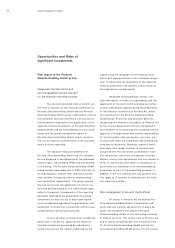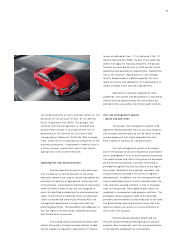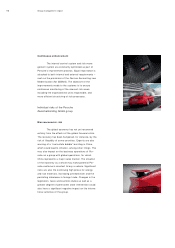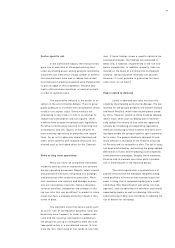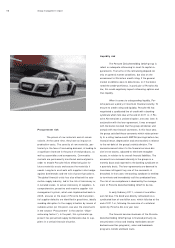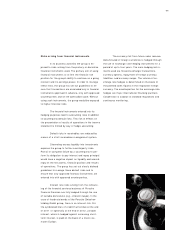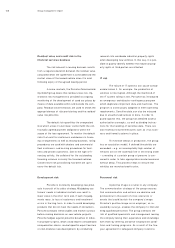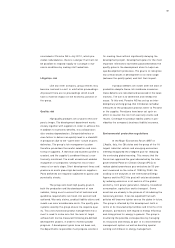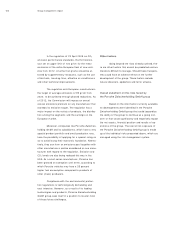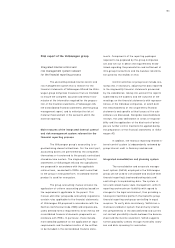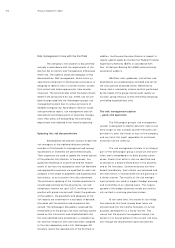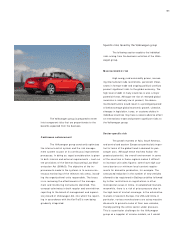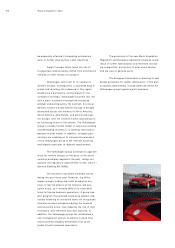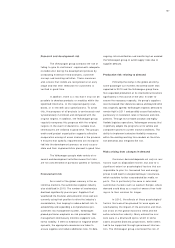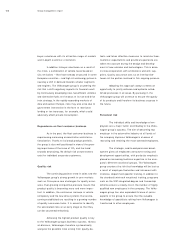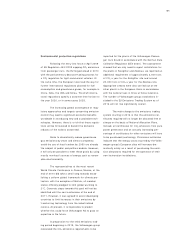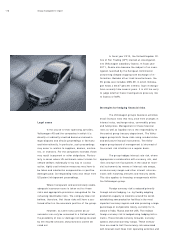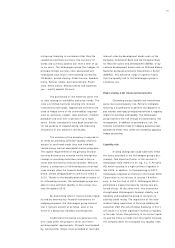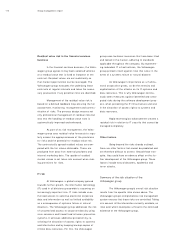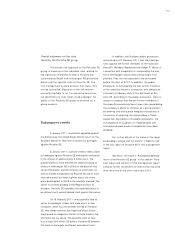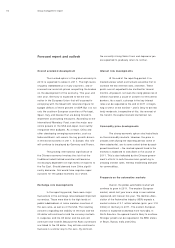Porsche 2010 Annual Report Download - page 106
Download and view the complete annual report
Please find page 106 of the 2010 Porsche annual report below. You can navigate through the pages in the report by either clicking on the pages listed below, or by using the keyword search tool below to find specific information within the annual report.Group management report
Risk management in line with the KonTraG
The company’s risk situation is documented
annually in accordance with the requirements of the
German Act on Control and Transparency in Business
(KonTraG). The auditors check the adequacy of this
documentation. Risk management, which forms an
operational component of the business processes, is
designed to identify risks in a timely manner, assess
their extent and, where appropriate, take counter-
measures. The Scania brand, which has been consoli-
dated in the group since 22 July, 2008, has not yet
been incorporated into the Volkswagen group’s risk
management system due to various provisions of
Swedish company law. According to Scania’s corpo-
rate governance report, risk management and risk
assessment are integral parts of corporate manage-
ment. Risk areas are evaluated by the controlling
department and reflected in the financial reporting.
Updating the risk documentation
Standardized risk position surveys of both the
risk managers of the individual divisions and the
members of the boards of management and manag-
ing directors of investees are performed annually.
Their responses are used to update the overall picture
of the potential risk situation. In the process, the
qualitative likelihood of occurrence and the relative
extent of any loss are assigned to each risk identified
and appropriate measures are specified for each risk
category in the shape of guidelines and organizational
instructions, so as to counter the risks concerned.
The continuous updating of the risk documentation is
coordinated centrally by the governance, risk and
compliance function set up in 2010, working in con-
junction with group internal audit. Under the guidance
of the auditors, the plausibility and adequacy of the
risk reports are examined on a test basis in detailed
interviews with the divisions and companies con-
cerned. The Volkswagen AG auditors assessed the
effectiveness of the group’s risk early warning system
based on this information and established both that
the risks identified were presented in a suitable man-
ner and that measures and rules have been assigned
to the risks adequately and in full. Volkswagen AG
therefore meets the requirements of the KonTraG. In
addition, the Financial Services Division is subject to
regular special audits by the German Federal Financial
Supervisory Authority (BaFin) in accordance with
Sec. 44 German Banking Act (KWG) and controls by
association auditors.
Workflow rules, guidelines, instructions and
descriptions are systematically recorded and can for
the most part be accessed online. Adherence to
these rules is assured by internal controls performed
by the heads of the group internal audit, quality as-
surance, group treasury, brand controlling and group
controlling organizational units.
The risk management system
– goals and operation
The Volkswagen group’s risk management
system is designed to identify potential risks at any
early stage so that suitable counter-measures can
be taken to avert the threat of loss to the company,
and any risks that might jeopardize its continued
existence can be ruled out.
The risk management system is an integral
part of the Volkswagen group’s structure and work-
flows and is embedded in its daily business proc-
esses. Events that entail a risk are identified and
assessed on a decentralized basis in the divisions
and at the investees. Countermeasures are intro-
duced immediately, their effects are assessed and
the information is incorporated into the planning in
a timely manner. The results of the risk manage-
ment process are used to support budget planning
and controlling on an ongoing basis. The targets
agreed in the budget planning rounds are continu-
ally verified in revolving planning reviews.
At the same time, the results of risk mitiga-
tion measures that have already been taken are
incorporated into the monthly forecasts on further
business development in a timely manner. This
means that the board of management always has
access to an overall picture of the current risk situa-
tion through the documented reporting channels.
10 4


